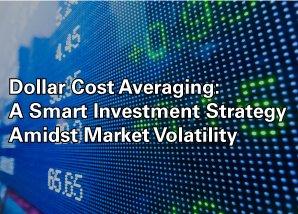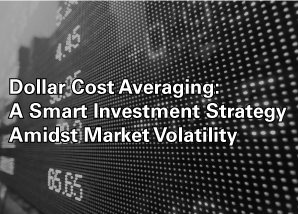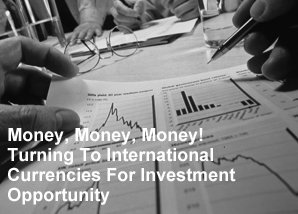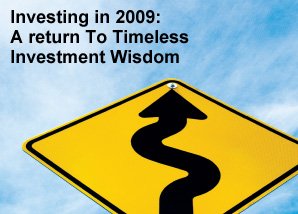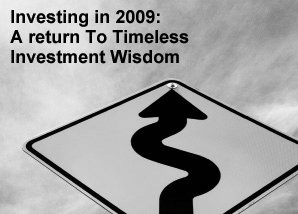Investment Strategies To Match Your Needs
Know the difference between different investment strategies to meet your goals and needs in order to invest smarter.
When it comes to investing your money, there is no “one-size-fits-all” approach.1 You will need to ask yourself some important questions to help you decide on an investment strategy or approach that will work best for you and your investment goals.1
For example, are you a risk-taker or risk-averse?
Are you looking for long-term growth or immediate gains?
Are you trying to grow your wealth or create a steady stream of income?

Growth investing is an investment strategy that is focused on the growth of your capital.
Based on your answers to a few key questions, you will be able to match your needs and goals to a certain investment strategy, or perhaps a combination of investment strategies.1
Growth investing
If you are planning to invest to grow your wealth by maximising your capital gains, then growth investing would suit your investment goal.2 Growth investing is an investment strategy that is focused on the growth of an investor’s capital by investing in growth stocks or companies whose earnings are expected to grow at an above-average rate compared to its industry or the overall market.2 It is a common investment strategy that is appealing to many investors because buying stocks in emerging companies can provide good returns if the companies are successful.2 However, investing in such companies can carry higher risks.2
A common option to use growth investing as your investment strategy would be through growth funds. Growth funds primarily invest in growth stocks – stocks of companies that are expected to grow at a faster rate in relation to the overall stock market.3 So if you are looking to grow your assets over time, growth funds is a good tool to achieve this investment goal.3 Growth funds typically perform best in the mature stages of a market cycle when the economy is growing at a healthy rate.3
Technology stocks like Apple and consumer cyclical stocks like Coca-Cola, are examples of what growth fund managers buy for their portfolios.4 But growth funds don’t buy only large-cap stocks; they also buy small- and mid-cap growth stocks of companies you may not have heard of but could be the next big growth company.4 Another area where growth funds may invest in is emerging markets with long-term potential for capital growth from large populations and fast growing companies.5 The basis of emerging market investments is that it exposes an investor to growth potential not possible in developed markets.5
If you opt to invest in growth funds, you should keep in-mind that growth stocks can have temporary periods of extreme fluctuation and that this strategy is best for aggressive investors with long-term investment time horizons such as 10 years or longer.3 Even though growth funds can have high returns in any given year, they also tend to decline more than the average stock fund during bear markets.3 Another caveat of growth funds is that they pay little or no dividends so the return to the investors is realised through the price appreciation of the underlying investment.4
Dividend investing
Dividend investing provides an opportunity for you as an investor to create a stream of income in addition to the potential growth in your portfolio’s market value from asset appreciation.6 If you invest in dividend funds, for example, you would be investing in funds that primarily buy into companies that pay dividends, which are profits that companies share with stock shareholders.7 Dividends can be received as a source of income or they can be used to buy more shares in the fund.7 Generally, investors who invest in dividend funds are looking for a source of steady and reliable income from their investments.7
Because of their income-generating nature, dividend funds can be ideal for retiring and retired investors.7 Beyond providing a reliable source of passive income, dividend funds tend to be less risky compared to other types of funds like growth funds.7 You could also invest in dividend funds in economic environments where bond funds are not attractive.7 For example, when interest rates are low but the economy is doing well, bond funds can have lower yields than dividend funds.7
A variation of the dividend investing approach where your focus is high dividend yield is a strategy that focuses on high dividend growth rate.6 This strategy requires investing in companies currently paying lower-than-average dividends but which are growing so quickly that within five to 10 years, the absolute Ringgit amounts collected from your stocks are equal to or higher than would have been received from just focusing on high dividend yield.6
The dividend growth investing strategy typically involves a combination of the following:
- Investing in a collection of great companies that increase their dividends at a rate equal to or substantially in excess of annual inflation.8
- Holding onto positions for long periods of time to take advantage of deferred taxes as it allows for more capital to be working for you, which means more dividends being paid out to you.8
- Diversifying across different industries and sectors so your dividend stream isn’t too reliant upon a single area of the economy.8
- Making sure the dividend growth is being financed by higher levels of real underlying profit and not ever-expanding debt.8
- Investing in a collection of stocks from different countries so you collect dividends in multiple currencies to reduce dependence upon a single economy.8
Income investing
Income investing is a strategy where you put together a portfolio of assets specifically tailored to maximise the annual passive income generated by your investment holdings.9 The goal is to produce a stable and constant stream of cash from a collection of higher-thanaverage yielding assets to support your day-to-day living expenses.9
How much cash can you expect from an income investing strategy? The common guide is the 4 percent rule – meaning you take 4% of your account balance out each year to fund your living expenses.10 Why 4% you ask? Research has shown that if the market crashes, taking out 5% will cause you to run out of money in as little as 20 years; whereas if you take out 3%, you will virtually never run out of funds.10 So at 4%, the belief is you will never run out of money.10
Often, those who prefer the income investing strategy fall into one of two categories. The first are people who are retiring or retired and want to live off their money to the maximum degree possible without eating too much into the principal.9 The second are those who receive a large sum of money from a financial windfall – like receiving an inheritance, selling a business, or perhaps winning the lottery.9
By choosing slower growth, higher payout stocks, bonds, real estate and other assets, people who are planning to retire or retirees can use the wealth they have accumulated during their working life to provide a stream of income for the rest of their lives to maintain their existing lifestyle, while those who are lucky enough to receive a financial windfall can invest it in similar assets to provide a second or third source of income to improve their standard of living.9
However, income investing is not without its downsides.9 While you may get more cash upfront, you will forego a lot of future wealth since your assets are sending the spare money to you rather than reinvesting it for growth.9 You also need to be mindful of growth so the actual real dividends, interest and rents are increasing faster than the inflation rate.9
Depending on different factors, a portfolio with an income investing strategy may consist of a mix of:
- Below average price-to-book ratios.11
- Lower than average price-toearnings (P/E) ratios.11
- Higher than average dividend yields.11
Value investing can be a subjective strategy with different investors potentially placing varying importance on different areas of a company’s fundamentals, performance and future growth.11 Despite that, the underlying reason of value investing is to purchase assets for less than they are currently worth, hold them for the long-term, and hopefully profit when they return to the intrinsic value or above.11
To learn more about the range of unit trust products carried by HSBC and the different investment strategies which may fit your long-term financial needs and goals best, speak to your Relationship Manager today.

Sources: 1 The Balance, 8 investing styles: which one is right for you? 28 June 2017. 2 Investopedia, Growth investing, 16 May 2018. 3 The Balance, What are growth stock mutual funds? 25 July 2018. 4 The Balance, The difference between growth funds and value fund, 19 March 2018. 5 Australian Financial Review, Emerging markets continue to offer value despite the risks and volatility, 9 August 2018. 6 The Balance, What is dividend investing and how does it work? 9 September 2018. 7 The Balance, Dividend mutual funds, definition, advantages and tips, 21 January 2019. 8 The Balance, Make money using a dividend growth investing strategy, 23 June 2018. 9 The Balance, How the income investing strategy works, 27 October 2016. 10 The Balance, 10 steps to successful income investing for beginners, 24 January 2019. 11 Investopedia, Value investing definition, 22 January 2019. 12 The Balance, The difference between growth funds and value funds, 19 March 2018.















